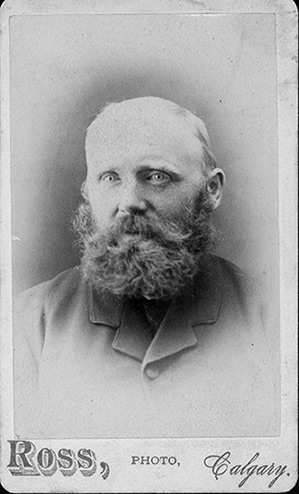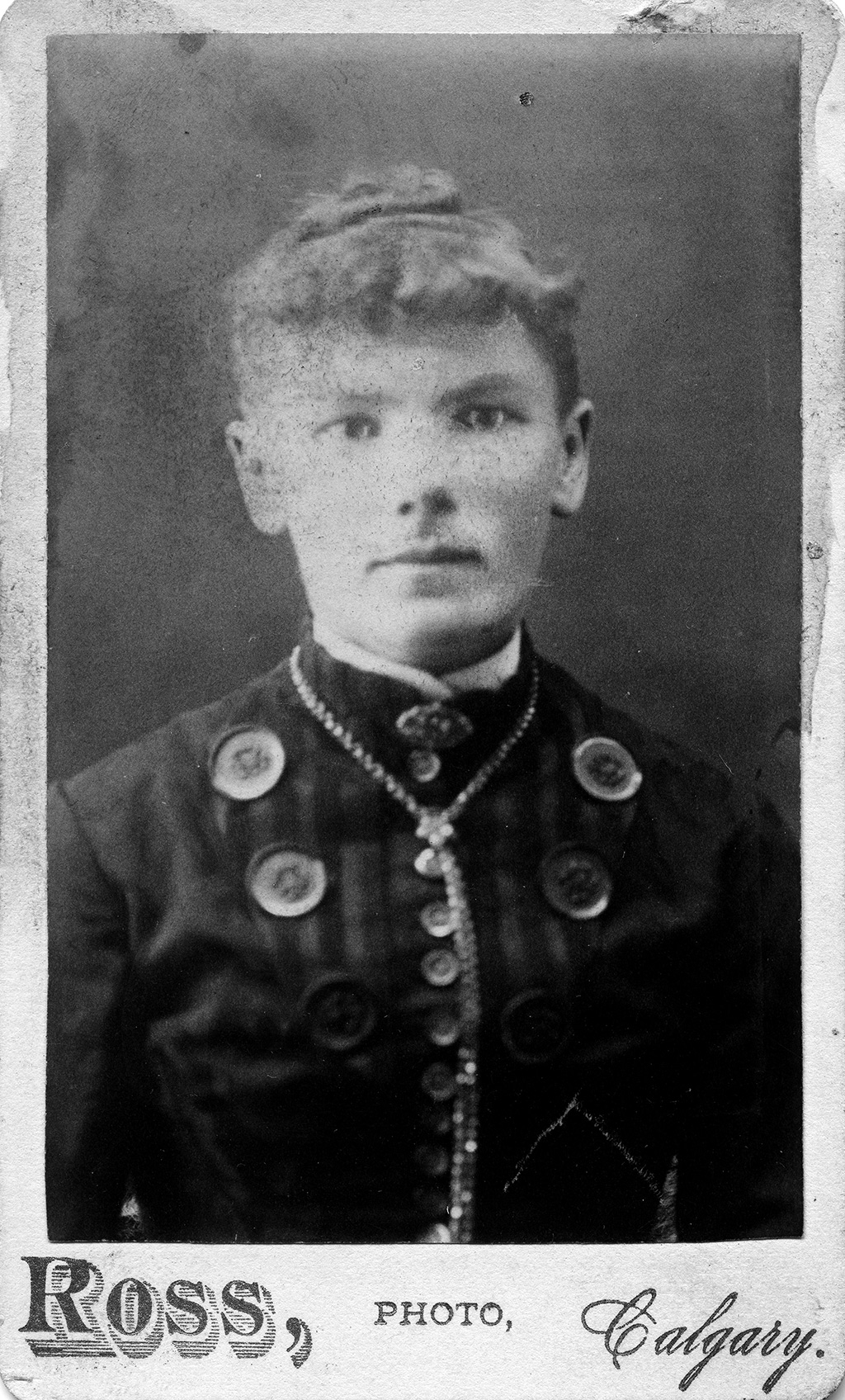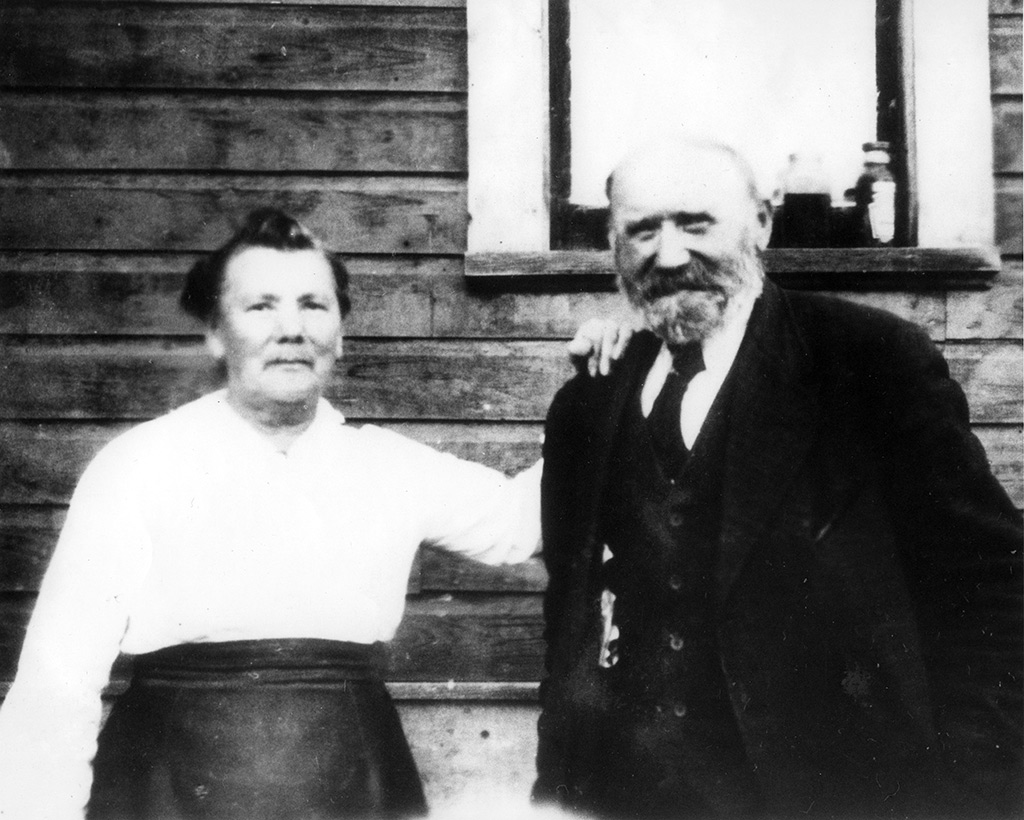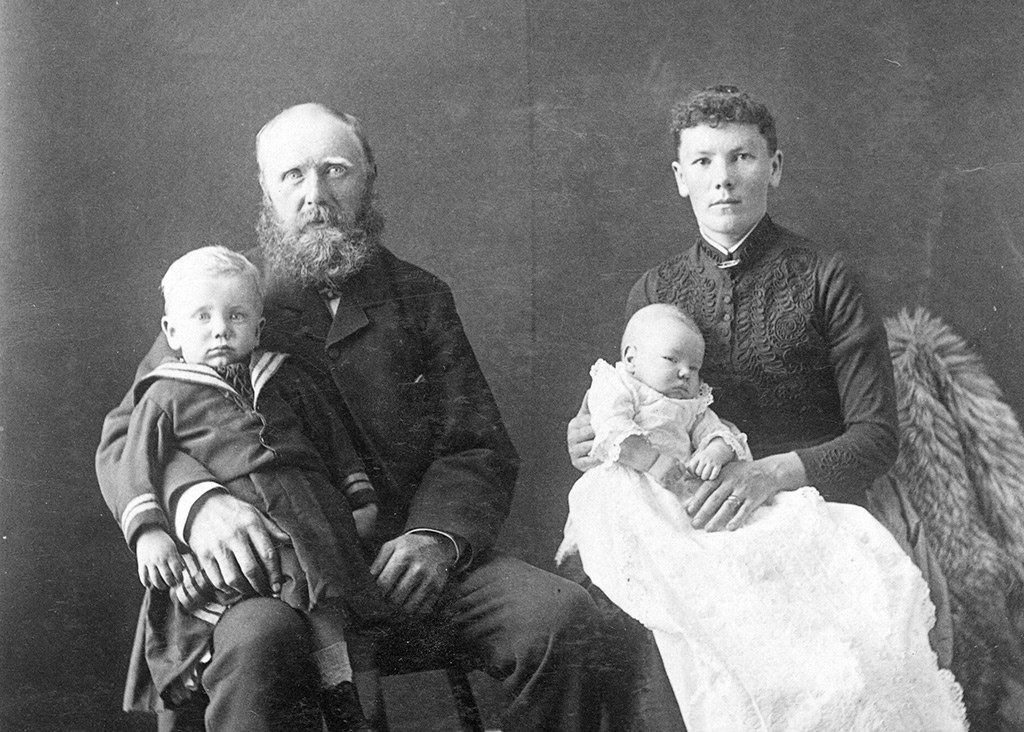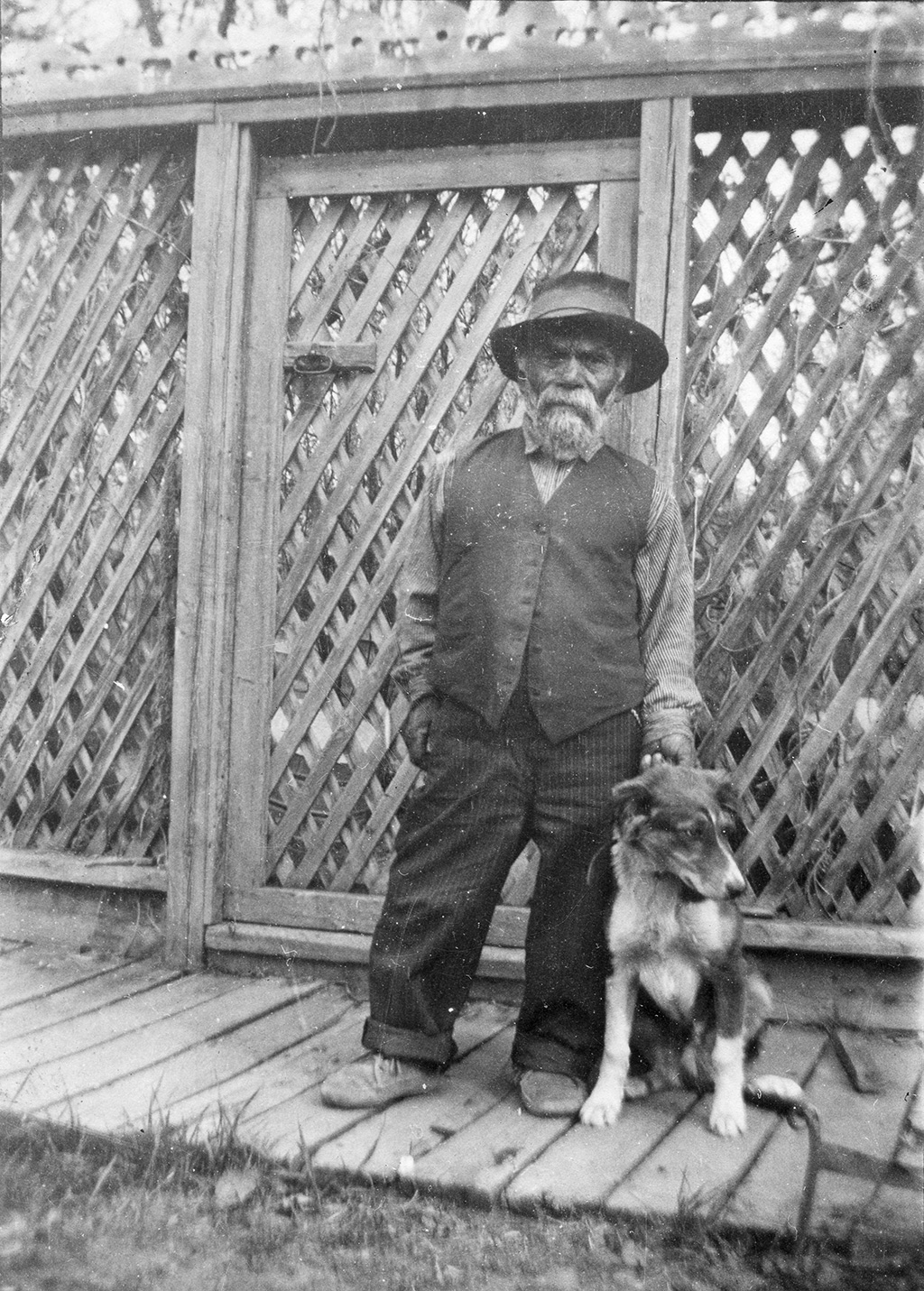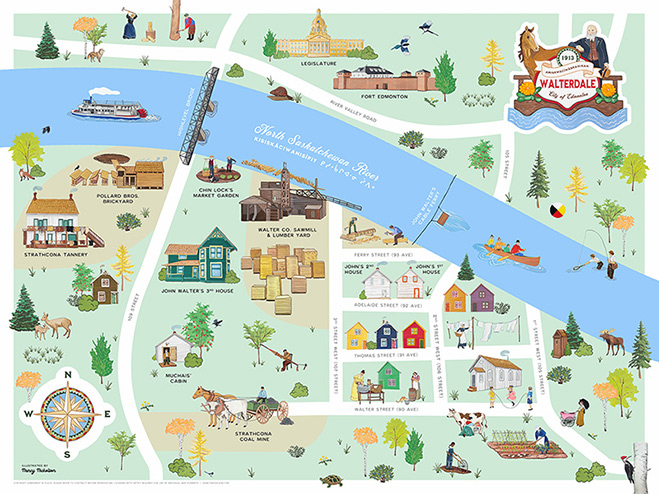
The land on which the John Walter Museum sits and the North Saskatchewan River that runs along it have a long history.
This has been the home for Indigenous people since time immemorial. It has been the home for Métis settlers and farmers. And it was the home of John Walter, his family and a working-class community called Walterdale.
All photos are courtesy of the City of Edmonton Archives.
The John Walter Museum consists of the 3 original homes in which John Walter built and lived with his family. They are now considered to be among some of the oldest buildings in Edmonton today.
The museum - through artifacts, archival photographs, and a vibrant interpretive program - tells the story of John Walter, one of Edmonton’s early immigrants, his family and his business ventures.
During his lifetime, he witnessed Edmonton change from a fur trade fort to a city. Through the telling of John Walter’s story, you get a glimpse into how the settler community of Edmonton, its communities and its relationships, developed and shaped the City as we know it today.
Like most people, John Walter had many different jobs and roles in his lifetime. We will explore a few of the different “hats” that he wore.
Born August 12, 1850, John Walter was the eldest child of William Walter and Helen Leask of Stenness, Orkney, Scotland. The people from these islands are called Orcadians. Like many remote and rugged island communities, the Orcadian lifestyle centred on being resourceful and doing different jobs and activities. John’s father worked as a farmer, boat builder and miller to support his family. John brought this resourcefulness gained from his Orcadian childhood to good use during his 50 years of living in Edmonton.
Just like his father, John signed a five-year contract with the Hudson’s Bay Company (HBC) and came to live and work at Fort Edmonton in 1870. Because he could read and had carpentry skills, John had a higher status than labourers in the hierarchical structure of the HBC. John built York boats for the HBC, but he also used his carpentry skills to help build other early Edmonton buildings, like the McDougall Methodist Church.
During his time in the fur trade, John met many men who became life-long friends and associates. Mathias “Muchias” Collins was one of these men. Muchias, a Métis HBC employee, moved into a custom-fitted cabin (Muchias had achondroplasia, a type of dwarfism) built by John Walter in 1886. He lived there and worked for the Walter family until 1936.
When John arrived at Fort Edmonton, he was an immigrant and one of the 10% non-Indigenous minority. In the 1870s, Fort Edmonton and the surrounding communities were predominantly Cree and Métis. Unlike many of his coworkers, John did not marry an Indigenous woman, and did not have kinship relations with Indigenous families. John’s five years at Fort Edmonton would have shaped how he defined and understood what community meant in this area.
The 1870s marked the beginning of the settlement era for Edmonton. The HBC had “sold” its claim on Rupert’s Land to the Canadian government. The signing of Treaty 6 (1876) displaced First Nations communities onto reserves. Retired HBC men, many of whom had Indigenous wives and families, had already begun to build permanent homes outside the walls of Fort Edmonton.
The small community of Edmonton was growing on the north side of the river. When John’s contract with the HBC expired, he chose not to return to Orkney. Like two other former HBC employees who were Métis, Laurent Garneau and Joseph McDonald, John chose to settle on the south side of the river in the summer of 1876.
John Walter stayed in contact with his family in Orkney by writing and posting letters. His sister Mary joined him in 1881 and eventually married and started a family in South Edmonton. His other sister, Ellen, along with her family, emigrated from Orkney to Edmonton in 1910.
In 1886, 36-year-old John Walter met 25-year-old Annie Newby from Yorkshire, England. Annie immigrated to Canada in 1880 to work for a family who were part of a Methodist mission coming to settle in the Canadian west. Her journey eventually led her to take a position tending children for the Hardisty family at Fort Edmonton.
When she came to start her post, Annie met John on the cable ferry that he operated. Six months later, Annie and John married and settled into John’s second home. They soon welcomed two sons, John William (born 1887) and Stanley (born 1890). In 1891, Annie’s mother emigrated from Yorkshire to live with the Walters and help Annie look after the children.
During the 50 years in which he lived here, John Walter started and operated many business ventures, most of which were successful and generated wealth.
Many accounts of John Walter falsely claim that he was a millionaire! This claim has never been proven and is most likely not true. A more important marker of success was John’s reputation for running honest businesses and being a good employer. In fact, his reputation was known all over western Canada.
John became very involved in the development of the community on the river flats on the south side of the North Saskatchewan River. Walter served for one year as an Alderman on the first Strathcona Town Council in 1899. He was active in raising funds and sat on boards for South Edmonton’s first school and hospital. He was also known to give free lumber to community organizations such as churches and schools. He opened his homes to travellers in need and during the 1915 flood he helped his neighbours even though his sawmill business had been destroyed.
John was a vocal supporter of the concerns of the working-class community on the river flats, now called Walterdale. Up above the river banks, the town, and later city, of Strathcona developed quite rapidly. Because Walterdale was somewhat physically separated from the main part of Strathcona, it often did not receive services like running water and electricity. Walter went to Strathcona council several times to represent the community’s needs and tried to ensure that the residents of Walterdale were well looked after.
His Business Ventures
Let’s now take a look at his businesses and provide some insight into not only Walter’s life but also the growing community.
As river travel was widely used until the 1910s, it is not surprising that John’s first business venture was building and repairing all kinds of vessels, from scows to steamboats.

John Walter’s steamboat, ‘The City of Edmonton’, was used to haul freight up and down the North Saskatchewan River. On weekends, it was used to take people on pleasure cruises.
John Walter is best known for his ferry service, which he provided for roughly 36 years. As bridges were yet to be built, this was a good business to run because the ferry made it easier to cross the North Saskatchewan River when it was not frozen.

In 1876, John built an oar-propelled scow. He launched it close to the original location of his first house (by the present High Level Bridge). In 1877, he applied for a licence from the Canadian government to officially operate his ferry.

This licence gave him the exclusive right to operate and set the maximum rate of tolls and hours of operation. John charged reasonable rates and waived the fee for anyone attending church on Sundays. In 1881, he replaced the scow with a larger cable ferry. Due to community demand, in 1883 he started a second ferry service which operated further downstream.
John most likely started a freighting business because he needed to bring supplies and transport materials to support his boat-building business. His teams soon became known for moving just about anything across the prairies and were relied upon by many Edmontonians.

Until 1880, the main source of products for settlers was the Hudson’s Bay Company store inside the Fort. John Walter, recognizing a growing need for products on the south side of the river, bought goods with cash from the HBC store and then resold them from his house. He accepted cash, gold dust, trade or a day’s work. He also shipped in supplies from Fort Carlton and Calgary. John offered a wide variety of products and followed the demands and wants of his customers. By 1885, he stopped selling products, likely due to the increase in competitors and because he was focused on other business ventures.
Ever resourceful, John Walter opened a blacksmith and carriage shop when he discovered the blacksmith talents of his ferry hand, John James (J.J.) McKenzie. With the shop in place, Walter was able to expand his boat-building business to include carriage and farm implements. This shop was a busy place where anything made of metal needed fixing, such as plows, wagon parts and carriages could get repaired.
Unlike other early settlers, John did not intend to farm. However, he was required to do some farming in order to continue expanding his businesses. Because John claimed land prior to the 1882 government survey, his initial claim, like everyone else's, was not officially recognized. Under the regulations of the Dominions Lands Act, in order for John to keep his claim he was required to farm a significant portion of his land.
By 1880, it appears that John was ready to farm, in good time before the surveyors were due to arrive in the area. In The Edmonton Bulletin in the 1880s, there are many entries noting Walter’s lost cattle, how much grain he threshed, and if his crops failed or succeeded.

By 1893, with the purchase of the sawmill, John’s focus and efforts went towards the lumber industry.
With the additional financial backing of William Ross and Alexander Rutherford (the soon-to-be first Premier of Alberta), the Strathcona Coal Company opened. It became one of the seventeen big mines that operated in the Edmonton area and was just east of the present day High Level Bridge. The mine operation was successful, producing a total of 150,000 tonnes of coal and employing many workers.
Sadly, the Strathcona Coal Company was best known for a terrible mining accident that occurred June 8, 1907. A fire broke out in the mine shaft and killed five workers. It was the worst industrial accident in Strathcona’s history. Although he was shocked by the disaster and never got over the loss of the workers, Walter reopened the mine.
Given his own lumber needs as well as those of the growing community, it was not a surprise that he built a sawmill and lumberyard. This business was almost immediately successful and became his largest venture.

In the winter months, Walter employed about 200 men, known as fellers, to cut trees on his timber leases, such as at Big Island upstream west of Edmonton. In the spring, after the ice melted, they would send the logs downstream to be moored in the river next to the mill. The logs were processed in the sawmill, with the lumber either being stored in the yard (where the Kinsmen parking lot now is) or shipped using the steamboat to communities across the prairies.
By the start of the First World War in 1914, the rapid growth that Edmonton experienced had come to an end and Walter’s lumber business had slowed down considerably. The North Saskatchewan River flood of 1915 swept away Walter’s lumber holdings and business. At the age of 66, it seemed that Walter did not have it in him to rebuild.
Land and Community
The John Walter Museum and the City of Edmonton are part of an aspen parkland region with mixed forests and flat prairie.
Main Waterway - The North Saskatchewan River
The North Saskatchewan River (kisiskaciwanisipiy in Cree and omaka-ty in Blackfoot) is the main waterway which is connected by many tributaries. Its fast-flowing silty waters carry on across the prairies and eventually empty into the Hudson Bay. The river’s valley is wide and steep in places with a soft clay and rocky shoreline. This area was once home to many fish, moose, elk, deer and beaver.
Many different First Nations have lived in this territory. By the river and on the flats, Nations such as the nêhiyaw (Nay-hee-yow) / Cree, Dene (Deh-neyh), Anishinaabe (Ah-nish-in-ah-bay) / Saulteaux (So-toe), Nakota Isga (Na-koh-tah ee-ska) / Nakota Sioux (Na-koh-tah sue), and Niitsitapi (Nit-si-tahp-ee) / Blackfoot peoples. They have lived and gathered in this area we now call Edmonton for ceremony, trade, meetings, hunting, celebrations and rest.
Cultural World Views
The arrival of European fur traders in the late 17th century impacted and forever changed the lives of the Indigenous people and the land. Non-Indigenous settlers, like John Walter, mainly held the world view that natural resources like coal, timber, and minerals were there to be extracted and used. Land was a commodity that was owned for the benefit of the owner.
For many Indigenous people, stewardship of the land rather than ownership shaped their understanding. The responsibility associated with the care of the land was based on the idea that “land is not merely a supplier for resources for the current generation, but an environment to be looked after for the next generations.” (Indigenous Canada, page 12, module 1). These differing cultural world views are a key source of conflict and misunderstanding.
Industrial Development
Because the river valley was rich in natural resources, industrial development occurred all throughout the valley once the non-Indigenous settlers arrived. John Walter used the river for his various businesses, milled lumber, and mined coal. In 1895, a tannery was opened by Firmin Bedard. The river flats provided an open space and easy access to the water, both needed for tanning animal hides.
In 1898, Frank and John Pollard started a brickyard using clay deposits that were perfect for bricks. The soil was also considered to be rich for agriculture and one of Edmonton’s first Chinese market gardens was developed along the bank of the river.
Growth and Demise of a Community
As the industries developed, workers and homes were needed. A working-class community grew on the flats, with homes, a school, and a store. In 1907, the residents voted to call the area Walterdale to recognize John Walter as a long-term resident and operator of the largest businesses, the ferry and the sawmill. The name also recognized his work in trying to get better services for the community.
The community did not last long. In 1915, the North Saskatchewan River flooded and swept it all away.
Contact Us
John Walter Museum
Located at the bottom of Walterdale and Queen Elizabeth roads, on the north side of the Kinsmen Sports Centre parking lot.
Email attractionsexperiences@edmonton.ca
Phone 311
Address 9180 Walterdale Hill NW





